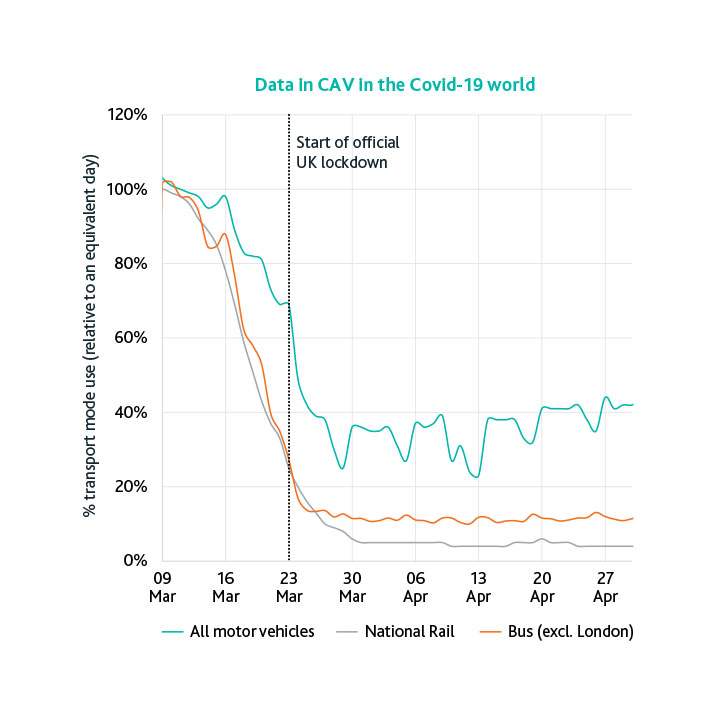Out-Law Analysis 2 min. read
Data can inform role for connected and autonomous vehicles in a pandemic

02 Dec 2020, 9:16 am
The context of a pandemic is perhaps the severest example of how governmental bodies and transport planners might use data to inform decisions on mobility needs. Organisations could use this data to optimise policy and strategy to address conflicting priorities, including safety, sustainability, economic development, social equity and aesthetics. Such data would allow rational consideration as to when, where, how and for whom CAVs might deliver the greatest commercial and community benefit.
Written by Nick Reed, Reed Mobility
Facilitating change
The global pandemic and the associated mitigations implemented to address it have served to highlight the importance of data in understanding the state of our society. Covid-19 brought about massive changes in global transport patterns – illustrated by UK transport data.

Even before the official lockdown, transport usage was decreasing rapidly as organisations and individuals recognised that dramatic changes to work and social travel patterns would be necessary to minimise transmission of the virus. Whilst this essential restriction of mobility was an inconvenience for many, some transportation was still necessary, such as in the case of 'key workers' going to their places of work, or in the context of the supply of testing and medical supplies to the relevant facilities or the response to the boom in home deliveries.
The provision of transport services risked exposing transport workers to the virus – more than 30 London bus workers died after contracting Covid-19 in the two months after the lockdown was imposed.
Nick Reed
Reed Mobility
It has been said that automated vehicles are 'a solution looking for a problem' – perhaps 2020 has provided the CAV sector with a new raison d’etre.
CAVs could have played some role in enabling mobility whilst minimising risk to transport workers. However, aside from a few small scale examples, such as Pony.ai, Nuro, and Cruise, their use was conspicuous by its absence. Indeed, prominent CAV operators such as Waymo and Voyage paused their consumer operations in response.
This perhaps reveals the state of CAVs in 2020:
- Firstly, that – for now at least – they depend heavily on human operators. At a time when human contact needed to be minimised, groups of technicians gathering to prepare CAVs for deployment represented a non-essential risk;
- Secondly, that they are generally not ready for live deployment in the field. This may have come as a surprise when one considers the bullish promises that were being made about the implementation time for CAVs. For example, in a 2013 paper, one of the major financial services organisations claimed that "completely autonomous cars are set to be available before the end of the decade". As has become apparent, the development of CAVs that can operate safely and reliably in public environments is fiendishly challenging. There is much work to do in terms of developing the technology, aligning regulations and preparing for society for the deployment of CAVs at scale.
However, given the high likelihood that we may face similar global pandemics in future, we should start making those preparations – using data from the Covid-19 experience to understand where CAVs could strengthen our resilience. This could be examining where transport workers suffered the greatest risk exposure, where key worker transportation was compromised, where vital medical supply chains broke down or which communities experienced food or grocery shortages. We can then determine how we might develop flexible CAV-based services that could address these, and other, challenges and prioritise such services in the future development, regulation and rollout of CAVs.
It has been said that automated vehicles are “a solution looking for a problem” – perhaps 2020 has provided the CAV sector with a new raison d’etre.


